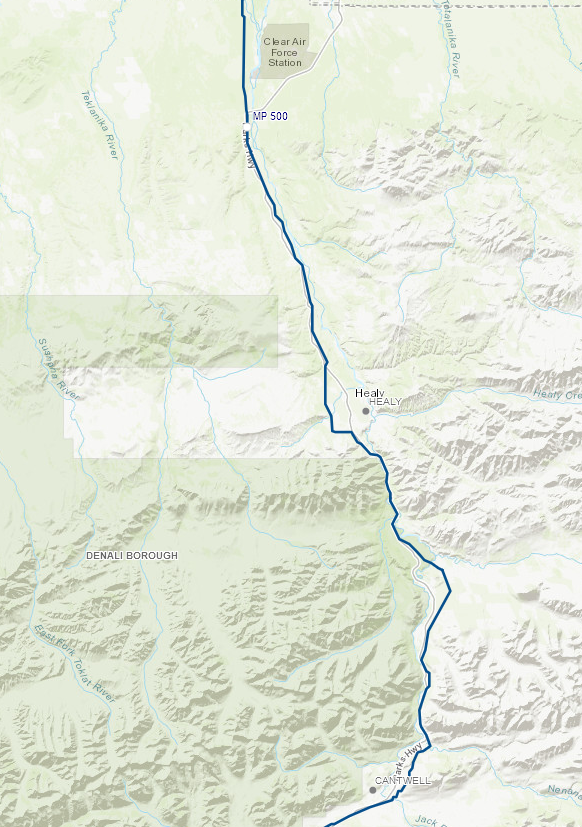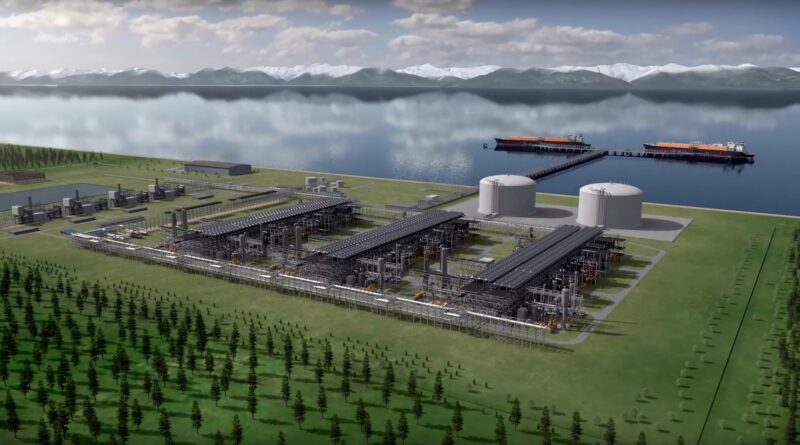New life for the Alaska gas pipeline
Image by Alaska Gasline Development Corporation
Two contractors working for the Alaska Gasline Development Corporation (AGDC) came to Healy on October 26 to share a presentation about the proposed 807-mile long gas line from the North Slope to Nikiski. About 20 community members attended. The PowerPoint slides are available at: https://alaska-lng.com/wp-content/uploads/2022/10/Healy-Alaska-LNG-Project-Update-10_24_2022_Final.pdf
Here are a few highlights from the presentation.
The Department of Energy held a public comment period in summer 2022 on a Supplemental Environmental Impact Statement that detailed impacts upstream of the facilities already approved in the main EIS. The original document was prepared by the Federal Energy Regulatory Commission (because of the export part of the project) in 2020.

AGDC believes that all necessary permits for the project have now been acquired or approved. These include approval of a route through Denali National Park mostly east of the Parks Highway that was authorized in recent Congressional legislation and by the National Park Service. The only component lacking for the project to proceed is the estimated $38.5 billion for construction. This estimate is less than the $60 billion estimate 3 years ago. The AGDC contractors explained that additional engineering and geologic investigations had allowed a reduction in the risk cushion for the project and thus lowered the cost.
AGDC map of pipeline route through the Denali Borough and Denali National Park. Detailed map available at this link.
Of the 3.5 billion cubic feet per day (cfd) that the North slope can supply, about 500 million cfd can be made available to Alaskan consumers, depending on need. Present use by those consumers is not over 200 million cfd. The rest of the gas can be exported. With Gulf Coast gas needed in Europe, pipeline supporters view Asia as a promising market.
The project does not include a spur line to Fairbanks. Taps on the 42” diameter line can be made anywhere, but attaching facilities to lower the pressure, “condition” the gas, and store it for local distribution to customers along the route in places like Healy or Denali National Park are also not included. Costs for adding these facilities are expected to be significant.
AGDC is trying to provide a green sheen to the project by discussing the possibility of carbon sequestration. Cook Inlet apparently has a high underground carbon storage capacity. If the natural gas is split into hydrogen and ammonia – with the hydrogen being exported as a fuel and the ammonia being used to make fertilizer – the leftover CO2 could be injected underground. Even waste CO2 from Asia could eventually be exported back to Cook Inlet for sequestration.
Construction in the Denali/Healy area is proposed for the non-tourist season. AGDC says that if funding comes through this year, then the pipeline might be open for business by 2031. The Infrastructure Investment and Jobs Act provided a new avenue for funding for the project, and the Biden administration has become supportive at least in part because of their efforts to provide alternatives to Russian gas. If no funding comes through, however, some of their major permits could sunset in 8 years.



Thanks for this summary, Steve!